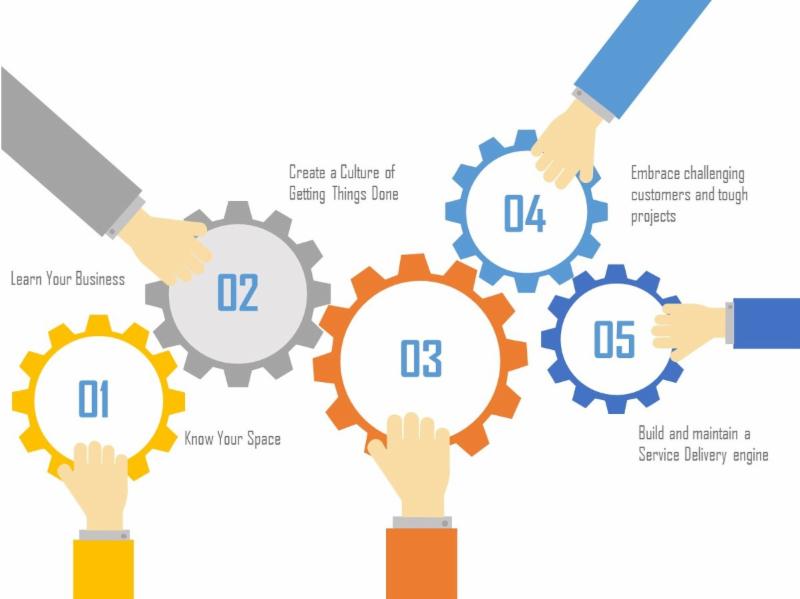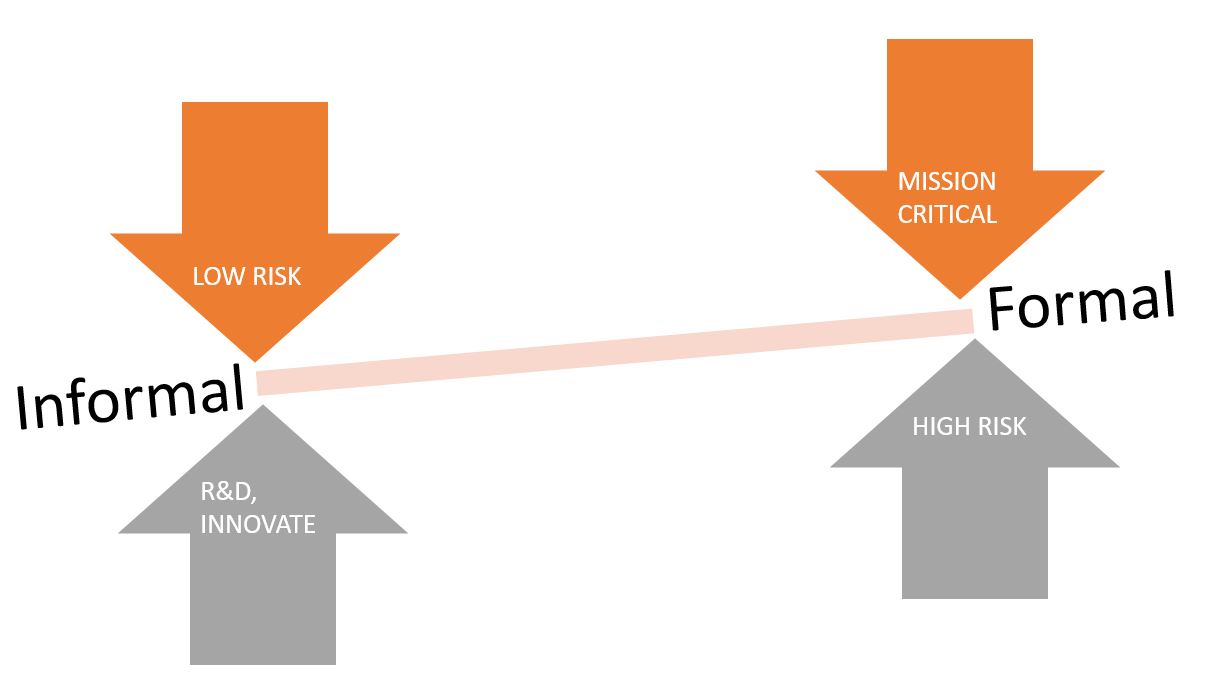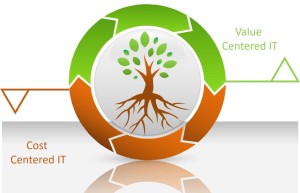-
LikedUnlikeDo Mid Market CIOs have FOMOphobia?
-
Comment
-
ShareShare Do Mid Market CIOs have FOMOphobia?
Is developing robots that replace existing jobs unethical?
A very tough question. Before we delve into it, let us look at the technology trends for 2021:
- Artificial Intelligence
- Business automation and robotics
- Enterprise risk management
- Human experience and productivity
- New computer architectures
- Next-generation communications
- Zero Trust security
As noted above, Artificial Intelligence (AI) and Business Automation and Robotics still tops the list.

The big theme on AI seems to be on ethical AI. It is easier to actually define unethical AI and then simply define ethical AI to be AI that is not unethical. What is unethical AI? Using AI to hack into personal information, interfere with others, modify data to match goals … there is no end to this list. But one item on the list will prove to be very conflicting: taking away jobs. For decades computers have taken away routine jobs. With digital robots powered by AI, this trend will only accelerate. For example, up to 20 million manufacturing jobs around the world could be replaced by robots by 2030, according to analysis firm Oxford Economics. People displaced from those jobs are likely to find that comparable roles in the services sector have also been squeezed by automation
The sound argument against is that automation has freed up people taking them away from routine tasks to become creators and innovators. Analysts state that for every job technology takes away from people, it creates two jobs. To date this prediction has held ground. However, despite these 2:1 employment gains from technology, there is an issue of redistribution of jobs that have left many behind creating a digital divide. In fact some even attribute the recent polarization in America to the digital divide. The solution is simple but very difficult to implement – education. Many large entities like Amazon, Google and Microsoft have taken the lead in supporting this transformation. Not just the big players, but even the smaller firms should play a big part in narrowing the digital divide.
Are you Innovating?
Difficult times – but probably the best time to create efficiencies and use those savings to innovate!
Keep your IT team busy – the right way. My good friend Eric Iverson expressed an opinion that it was a great time to upgrade the 405 freeway. Carrying that analogy into IT, this is the best to time to innovate and do things that you were too busy to do. Innovation should not be confused with creativity. Innovation is applying existing know-how in a different way that creates value.

Over the past several months, in our product division we are enhancing Service Prime to make it easier to manage resources remotely, automation to reduce management overhead, eliminating wasted resources and leveraging AWS cloud to reduce our product costs. We are working on a ML algorithm to help match resources to business/project needs to ensure ideal project team fit.
Our services division Infogen-Labs has developed script based cloud migration to reduce costs to migrate to the AWS cloud by 50%. They have also developed management toolsets to reduce salesforce support costs by 30%.
Innovation is not expensive, and now is the best time for it.
Somethings do not change …
 It is amazing that this blog post shown below was written eight years back and is just as relevant today!
It is amazing that this blog post shown below was written eight years back and is just as relevant today!
The question may sound almost blasphemous, particularly in light of numerous CIOs and CTOs I know who are all looking for a job – nevertheless it is a topic of great interest. Just to ensure we all have the same understanding, let us define a CIO to be the “architect” who aligns IT to the business ensuring “best value” for the business. CTO can be defined as the individual who delivers the IT in the most efficient manner possible. To address the issue of whether a CIO or CTO is required, let us first classify companies based on size.
Ignoring the Fortune 1000, there are 17000+ companies who have between 500 and 10,000 employees. Let us call these companies Tier-2 companies. There are probably 200,000+ companies who have more than 100 employees but less than 500. Let us call these Tier-3 companies. There are millions of companies smaller, and for the sake of this discussion, let us ignore them (even though they may have IT needs).
The role of both a CIO and CTO is critical in Tier-2 companies, and I am going to assert that these roles should not report to a CFO, but should report directly to the CEO or COO. It is possible, and likely, that the CTO reports to the CIO and may not even be called a CTO, but that is less important for this discussion.
Tier-3 companies who tend to emulate a Tier-2, generally have a CIO. I take the position that in such firms, the role of a CIO is greatly exaggerated. After all, once the IT vision is articulated, the role becomes more of a lower level delivery manager. My view is that for such firms, an on-demand CIO service is valuable. Organizations like Office of the CIO, USourceIT all foster on-demand services. The advantages of the on-demand service are:
- There are no excessive fixed costs (a small retainer plus on-demand service provides continuity).
- Different skills are brought to the table based on demand – for example, if the focus is applications, then an applications architect may be better suited for the business.
- Experience in different verticals and horizontals can help “reuse” the knowledge base – for example, if a firm needed CPG and manufacturing experience, then a CIO who has worked in such environments can offer rapid solutions to align the IT to the business needs.
The key to success for a CIO on-demand service is to provide a trusted value driven turn-key IT capability to Tier-3 companies that enables them to compete, grow and operate effectively.
Ken Venner: CIO of the Month – May 2017
 Ken Venner is CIO at a space company that builds rockets. Like uGovernIT, our integrated IT management solution, Ken’s focus is to deliver Information Systems and Technology services that are “Like Air”, enabling engineers and scientists to propel mankind forward as a multi-planetary species. The challenge is to provide cost effective, high-performance and “always on” tools and business processes that enable the business to achieve this goal.
Ken Venner is CIO at a space company that builds rockets. Like uGovernIT, our integrated IT management solution, Ken’s focus is to deliver Information Systems and Technology services that are “Like Air”, enabling engineers and scientists to propel mankind forward as a multi-planetary species. The challenge is to provide cost effective, high-performance and “always on” tools and business processes that enable the business to achieve this goal.Ken’s accomplishments cannot be summarized in a blog post. I need a book for it. Just one example may gi ve insights into his ability. He built a customer ERP package to meet the unique needs of a 21st century rocket company involved in space explorations.
ve insights into his ability. He built a customer ERP package to meet the unique needs of a 21st century rocket company involved in space explorations.
Ken brings an in depth knowledge of information technology coupled with a good vision to the future. With his deep knowledge of the business, he successfully builds a seamless bridge between business and IT. And further add to this, his uncanny ability of managing people of various backgrounds: analysts, programmers, managers and even support staff who are in security and facilities. I was visiting him at the famous space exploration company, and both the security guard and receptionist were telling me how they enjoyed being a part of Ken’s team.
Despite his lofty achievements, Ken is very humble and always willing to help.
I requested him to send a short monograph on how to succeed as a CIO. His advice centers around five key tenets. Please read the full text and you will see why he is our CIO of the month. He is also a good friend and a key reason behind our success at UGovernIT.
March 2017 CIO of the Month: Dan Sze
 Dan completed his Federal Government career as Deputy Director of State programs, where he deployed multi-billion energy programs. At the Departments of Energy, Defense and State, he performed as acquisition executive, program director, strategic policy manager, contracting officer, construction manager, chief information officer and Foreign Service Officer. During that time, he was responsible for major policy and regulatory initiatives under six American presidents and construction of the East Coast Trident nuclear submarine base. He obtained his Architect registration in 1982. Dan also serves on the City Council, City of Falls Church, Virginia.
Dan completed his Federal Government career as Deputy Director of State programs, where he deployed multi-billion energy programs. At the Departments of Energy, Defense and State, he performed as acquisition executive, program director, strategic policy manager, contracting officer, construction manager, chief information officer and Foreign Service Officer. During that time, he was responsible for major policy and regulatory initiatives under six American presidents and construction of the East Coast Trident nuclear submarine base. He obtained his Architect registration in 1982. Dan also serves on the City Council, City of Falls Church, Virginia.
As an example of his achievements, Dan was the national program manager of Rebuild America, a network of state, community, and business partnerships focused on energy efficiency and energy technology projects in buildings and infrastructure. Under his leaqdership, energy efficiency improvements across 2 billion square feet of projects resulted in $500 million annual savings. To put this in perspective, that was the equivalent of 10% of all commercial space in the United States. To accomplish this, Dan created a world-class web based platform with opting-in, tracking and handling a variety of workflow activities, aggregating and directing responses to requests for technical assistance and workshops, and facilitating interaction among over 3,000 communities and individuals, 250 business entities and 25 strategic non-government organizations (NGOs). The Rebuild America system was validated in a DOE/KPMG Peat-Marwick study as “best in class” for the Department.
At UGovernIT, Inc., we help CIOs leverage technology and deliver true value to their enterprise. Every month we name a CIO who has helped us understand the role of the CIO and build uGovernIT, the product that is termed “the Uber of IT Management.” We are honored to select Dan Sze as the CIO of the month. I requested him to send a short autobiography of his career. Please read it and you will see why he is our CIO of the month. One of his quotes I will never forget is”everything you have done up to this point in time counts for about 10%; what lies ahead is the remaining 90%.“
IT Budgeting Made Simple!
In the past, presenting IT budgets was not unlike visiting the Dentist. We all had to do it, but hated it. We all tried to compare how well we did in reducing costs. We used metrics such as cost of IT per employee or percentage of revenues and compared it with our peers. For example, mid-sized companies spent around $13K per employee on IT and large companies spent about 20% less. These cost centered IT Budgets are a thing of the past.
With the shift towards business driven IT, the single most important metric is the value derived from IT. We can define three stages of organizational maturity with respect to IT management:
- Stage 1 – where Cost Centered IT far exceeds Value Centered IT
- Stage 2 – where Cost Centered IT is about the same as Value Centered IT
- Stage 3 – where Value Centered IT far exceeds Cost Centered IT
The question naturally that comes is how do we measure value. In general there are three types of value:
- Real – actual benefits/value received that can be measured;
- Algorithmic – where benefits/value is calculated algorithmically; and;
- Perceived – subjective assessment of benefits/valuation.
While you can spend enormous resources in identifying value, we argue it can be done relatively quickly if you use a combination of the three approaches. uGovernIT offers a multitude of models that can be tailored to meet each industry. The best part is that the businesses can tailor the models to their specific enterprise without the need for extensive IT effort.
Value centered IT is the practical way to align IT to organizations. uGovernIT provides a 360 degree view of IT to align resources to IT activities that provide most value to the enterprise. Value centered IT helps bridge the gap between business and IT, and uGovernIT provides an elegant solution to help you automate the process.
The Importance of Analytics – A Personal Story
Many, particularly in the IT leadership field, fail to see the importance of IT analytics. They see the importance of Analytics for the business, but not for IT. This is particularly true for the Small to Mid-Sized firms. At first glance, IT Analytics may seem to be an overkill. However, the basic principles of management theory suggest that you cannot manage what you cannot measure.
I did a small personal experiment to verify the importance of measurement. I love to walk, so I wear a pedometer watch. I had a personal goal of at least 20,000 steps a day. Over two years, I kept track of the number of steps I walk on a weekly basis. A small footnote: I walk over 150,000 steps a week, more than double the recommended metric of walking 10,000 steps a day. Week after week the variance was within 10%. My job keeps me on the phone at least 2 hours a day, and I walk and talk.
One week, I stopped looking at the measurements. I was still measuring the steps I walked, but simply did not observe it on a daily basis. The average steps had dropped almost 50%! Elementary statistics tells us that there could have been other confounding factors such as a trip, weather, health etc. While all these factors were not prevalent that week, the fact that it dropped 50% gave an opportunity for me to appreciate the importance of measurement. The goal of at least 20,000 steps a day had driven me to walk, and without measurement, motivation of reaching that goal had waned.
Managing IT is a lot more challenging than one simple metric. IT leaders have to device those metrics that motivate the department to achieve. Please refer to an earlier blog post on IT Analytics. This blog post may serve as a starting point for developing meaningful IT Analytics.

 entail more risk, and conversely, less formal models for lower risk items. The same framework is true for mission critical applications where you may want a more formal approach while less formal approaches are suitable for R&D and projects that lead to innovation.
entail more risk, and conversely, less formal models for lower risk items. The same framework is true for mission critical applications where you may want a more formal approach while less formal approaches are suitable for R&D and projects that lead to innovation.

 These point solutions cost a lot of money for license fees and dedicated teams to maintain them. They are stuck in the old school techniques and spend enormous resources. Mid market CIOs can learn from these mistakes. They can leverage modern approaches that are not onerous and can be customized easily to meet their needs.
These point solutions cost a lot of money for license fees and dedicated teams to maintain them. They are stuck in the old school techniques and spend enormous resources. Mid market CIOs can learn from these mistakes. They can leverage modern approaches that are not onerous and can be customized easily to meet their needs.
